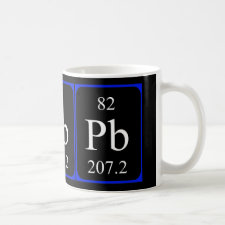
Authors: Fan HT, Sun XT, Zhang ZG, Li WX
Article Title: Selective Removal of Lead(II) from Aqueous Solution by an Ion-Imprinted Silica Sorbent Functionalized with Chelating N-Donor Atoms.
Publication date: 2014
Journal: Journal of Chemical & Engineering Data
Volume: 59
Issue: (6)
Page numbers: 2106-2114.
DOI: 10.1021/je500328t
Abstract: A Pb(II)-imprinted silica sorbent functionalized with chelating N-donor atoms for the selective removal of Pb(II) ion from aqueous solution had been synthesized by hydrothermal assisted surface imprinting technique. This sorbent was characterized by Fourier transmission infrared spectra, scanning electron microscopy and N2 adsorption. The results revealed that the Pb(II)-imprinted silica sorbent had high adsorption capacity (61.9 mg/g for Pb(II)), fast adsorption equilibrium rate within 30 min, wide pH range (3.5 to 6.5) for constant adsorption capacity, high selectivity and good regeneration performance. Compared with Langmuir, Freundlich and Dubinin-Radushkevich isotherm models, the best interpretation for the experimental data was given by the Langmuir isotherm. Its adsorption kinetics was better represented by pseudo-second-order rate equation in comparison to pseudo-first-order, Elovich and intraparticle diffusion models. The thermodynamic results showed that the adsorption of Pb(II) onto the imprinted silica sorbent was a spontaneous and endothermic process with further increase the degree of freedom at the solid-solution interface. Thus, this Pb(II)-imprinted silica sorbent is believed to be a favorable and useful material for the selective removal of Pb(II) from aqueous solution
Template and target information: lead ion, Pb(II)



Join the Society for Molecular Imprinting

New items RSS feed
Sign-up for e-mail updates:
Choose between receiving an occasional newsletter or more frequent e-mail alerts.
Click here to go to the sign-up page.
Is your name elemental or peptidic? Enter your name and find out by clicking either of the buttons below!
Other products you may like:
 MIPdatabase
MIPdatabase









